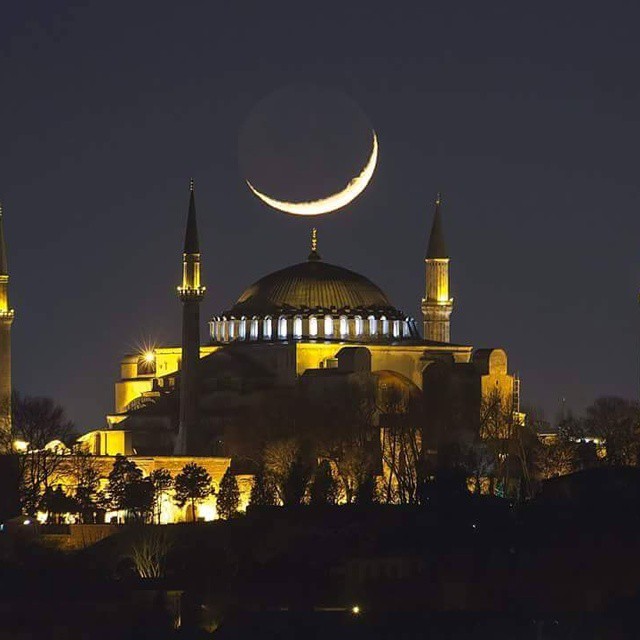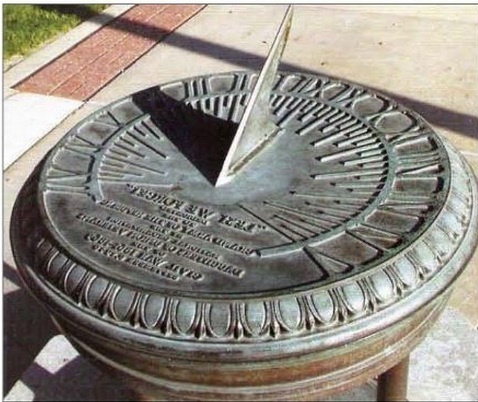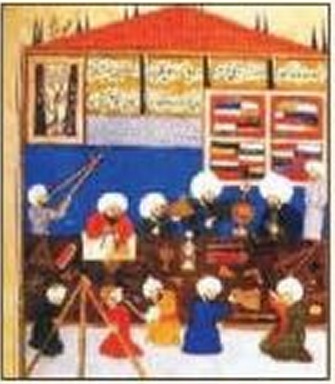
EVERYTHING IS CONNECTED TO THE CRESCENT
Muslims have traditionally used the Lunar Calendar (moon calendar), which has been used in Arabia since ancient times. In this calendar, a month is fixed with the completion of one orbit of the Moon around the Earth, which is approximately 29.53 days. Therefore, in this calendar, months consist of either 29 or 30 days. The new month begins with the sighting of the new crescent moon. If the crescent is not visible, the previous month completes 30 days. However, since there can be a discrepancy of one day between the calculated and observed dates due to the time between the rising and visibility of the new moon, the calculated and observed dates may differ.

Contribution Of Caliph Umar
The lunar calendar is more accurate and precise than the solar calendar. It does not involve issues such as leap days or leap years. Due to the ease of determining solar and lunar eclipses as well as moonlit nights, it facilitates the determination of historical events. Therefore, it is highly suitable for travelers and sailors. Additionally, Ramadan and Eid days, which occur 11 days earlier each year according to the solar calendar, do not always fall in the same season. In this calendar, the months are Muharram, Safar, Rabi' al-Awwal, Rabi' al-Thani, Jumada al-Awwal, Jumada al-Thani, Rajab, Sha'ban, Ramadan, Shawwal, Dhu al-Qi'dah, Dhu al-Hijjah. Every 33 years, a lunar calendar and a solar calendar align on the same day. Therefore, in Turkish, it is said of an elderly person that they are in their "third thirties," indicating that they have witnessed the convergence of the two calendars three times.
Among Muslims, the dating of years began in the 17th year of the Hijrah (the journey the Prophet Muhammad and his followers took from Mecca to Medina), by the order of the Caliph Umar ibn al-Khattab. Doubts about the date of a letter received from Abu Musa al-Ash'ari, the governor of Basra, led to this auspicious deed. It was unanimously agreed by the Companions (Sahaba) of the Prophet that the beginning of the calendar should be the first day of Muharram in the year of Hijrah when the Islamic state was established in Medina. This corresponds to July 16th, 622 AD, in the Gregorian calendar. In Islam, acts of worship such as fasting, prayer, obligatory alms (zakat), pilgrimage, as well as legal matters like waiting period (iddah), are determined according to this Hijri lunar calendar.
Two Calendars
The Ottomans also used the Hijri lunar calendar. However, since it was not aligned with the seasons, it caused some difficulties in the Ottoman Empire, which relied heavily on agricultural revenues and military organization tied to agricultural yields. This was because agricultural produce was harvested according to the solar calendar. With an 11-day difference between the lunar and solar calendars, the state treasury suffered losses. . Therefore, starting from 1089 AH / 1678 AD, the Julian Calendar—adopted from the Romans and known as the Rumi Calendar—was accepted for these specific purposes under the name 'Malî Sene' (Fiscal Year). However, years were still calculated based on the Hijri era. The Hijri calendar continued to be used. From the year 1120 AH, every 33 years a year was omitted, counted as a "leap year." The year 1120 Rumi was followed by 1122 Rumi. Thus, the years in both calendars aligned.
In the year 1287 AH /1870 AD, this adjustment was not made, resulting in a discrepancy between the two calendars, which continued to grow over time. Currently, we are in the Rumi year 1425, corresponding to the Hijri year 1431. Subtracting 584 from the Gregorian year gives the Rumi year, while adding 584 to the Rumi year gives the Gregorian year. However, the Rumi New Year begins on March 1st. For example, the Rumi year 1327 starts on March 13, 1911, and ends on March 12, 1912, in the Gregorian calendar. Finding the equivalents of Hijri years in the Gregorian calendar requires somewhat complex calculations, and it's advisable to refer to prepared tables for this purpose. In the Ottoman Empire, the Chief Astrologer (müneccimbaşı) and his staff were responsible for determining matters related to the calendar. Additionally, in major mosques, there were timekeeping rooms (muvakkithane) with timekeepers (muvakkitler) who determined and announced prayer times. The day was divided into two equal parts of 12 hours each; the time was always set to 12 when the sun set in the evening and could be adjusted forward or backward if necessary. Moreover, the Jewish and Armenian communities in the Ottoman Empire had their own special calendars for internal use.

Introduction of the New Calendar
In the late 16th century, except for Russia and the Balkans, Europe had begun to adopt the Gregorian Calendar, which was a reform of the Julian Calendar. However, the Ottoman Empire still used the Julian Calendar. The discrepancy between the two calendars had reached 13 days. During World War I, to align with the allies of the Ottoman Empire, this difference was eliminated. February 16, 1332 (February 29, 1917, in the Gregorian calendar) was followed by March 1, 1333. Russia and the Balkan countries continued to use the Julian Calendar for a while longer. In 1926, the Hijri calendar was entirely abolished in official matters in Turkey. The Fiscal (Rumi) Calendar, however, continued to exist by aligning the year with Europe. It was decided that December 31st of the year 1341 Rumi would be followed by January 1st, 1926. Thus, except for fiscal matters, New Year's Day was moved from March 1st to January 1st. The names of the months remained unchanged. In 1944, the month names Tishrin al-Awwal, Tishrin ath-Thani, Kanun al-Awwal, and Kanun ath-Thani were changed to Ekim (October), Kasım (November), Aralık (December), and Ocak (January), respectively.
Önceki Yazılar
-
THE INTELLECTUALLY ELITE: STUDENTS OF MADRASAS15.05.2024
-
THE PULSE OF TIME: CALENDAR1.05.2024
-
FRIENDS OF ENGLAND ASSOCIATON24.04.2024
-
THE ASIA MINOR CATASTROPHE OF GREEKS17.04.2024
-
HOW DID WOMEN VEIL, AND THEN HOW WERE THEY UNVEILED…10.04.2024
-
HOW CAN HISTORY BE BELIEVED?3.04.2024
-
THE OFFICIAL MADHHAB OF THE OTTOMAN EMPIRE27.03.2024
-
WHO ORDERED THE PLUNDER OF ISTANBUL?20.03.2024
-
THE PLAYS BANNED BY SULTAN ABDULHAMID IN EUROPE13.03.2024
-
WHAT WAS THE MISTAKE OF THE UMAYYADS?6.03.2024